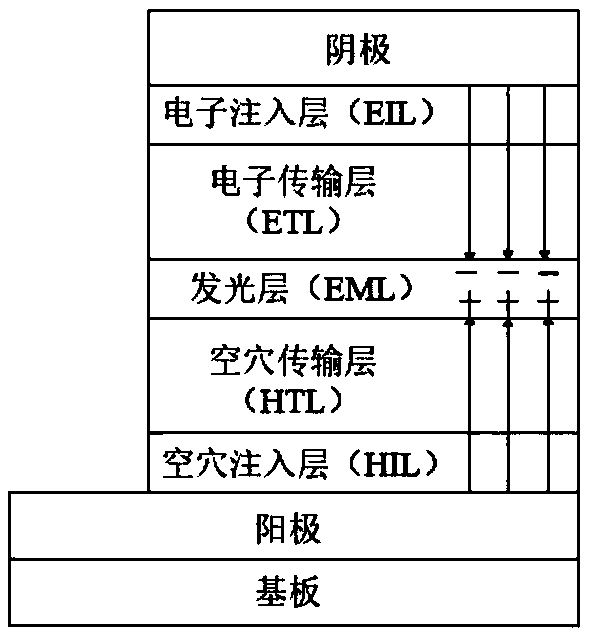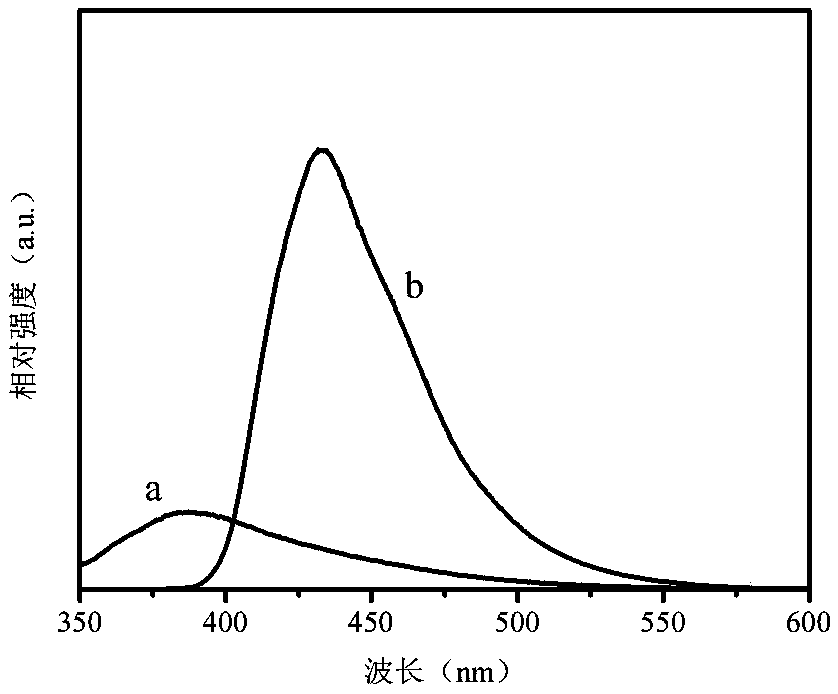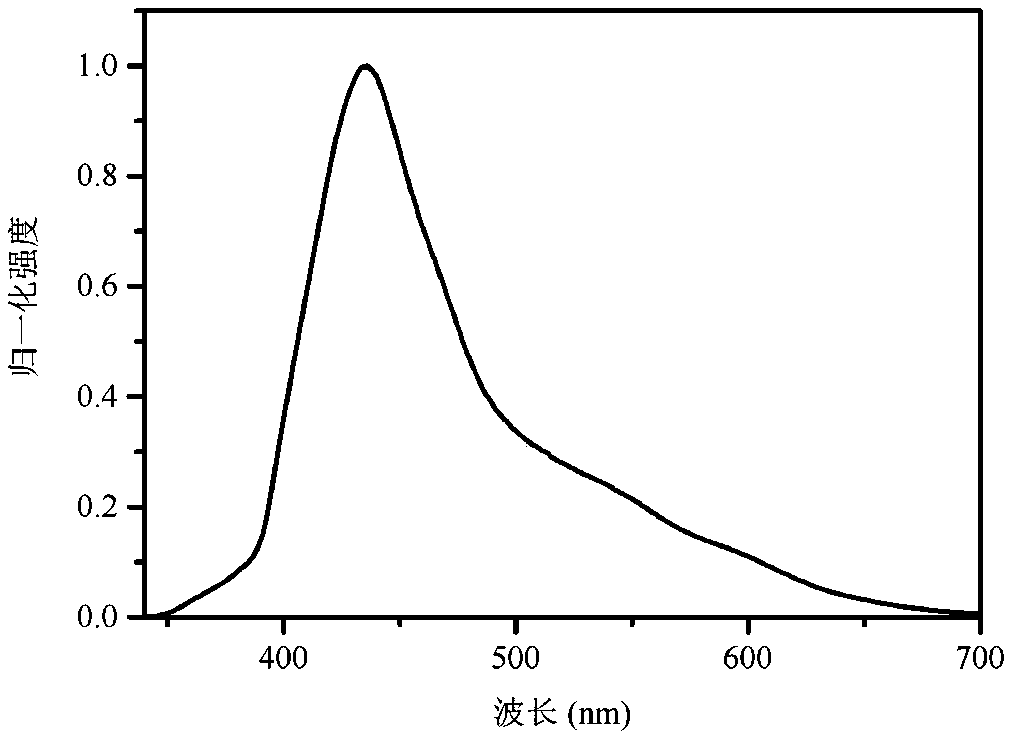Method for preparing organo-silicon polymer luminescent material and application of organo-silicon polymer luminescent material to OLED device
A technology of light-emitting materials and polymers, applied in the fields of light-emitting materials, chemical instruments and methods, can solve the problems of poor stability of organic light-emitting materials, limited light-emitting wavelength range, low comprehensive light-emitting efficiency, etc. Yoke system, effect of good rollability
- Summary
- Abstract
- Description
- Claims
- Application Information
AI Technical Summary
Problems solved by technology
Method used
Image
Examples
preparation example Construction
[0032] The preparation method embodiment of the organosilicon polymer luminescent material comprises the following steps:
[0033] The organosilicon polymer luminescent material is a PCS luminescent material containing anthracene groups in the side chain, and its general structural formula is as follows:
[0034]
[0035] Dissolve the ground PCS and 9-vinyl anthracene in xylene respectively, and add a catalyst to the xylene solution of 9-vinyl anthracene. After activation, mix the PCS and 9-vinyl anthracene solution into a container In the middle; set the temperature rise program, keep warm under an inert gas atmosphere, and react, and let the whole system cool down to room temperature naturally after the reaction; carry out negative pressure rotary distillation on the mixed solution after the reaction to remove the solvent to obtain a light yellow solid, and then After drying, the organosilicon polymer luminescent material is obtained.
[0036] The catalyst catalyst can b...
Embodiment 1
[0041] Preparation of PCS luminescent material with anthracene group in side chain:
[0042] (1) Weigh 3g of PCS, dissolve it in 30mL of xylene, and place the solution in a three-necked flask to check its airtightness. Then, the synthesis device was evacuated for 3 times with a vacuum pump, and the whole system was placed in an argon atmosphere protection environment.
[0043] (2) Weigh 0.5g of 9-vinylanthracene, dissolve it in 30mL of xylene, and drop into 1mL of H 2 PtCl 6 Catalyst, activation treatment about 30min.
[0044] (3) Slowly drop the above-mentioned 9-vinylanthracene solution into the three-necked flask of the synthesis device through the dropping funnel. Under magnetic stirring, allow the solution to mix thoroughly.
[0045] (4) After the reaction starts, a certain flow rate of argon gas should be maintained. Heating program: from room temperature to 80°C, the heating rate is 5°C / min, and the synthesis time is 2h. After the reaction, the whole system was na...
Embodiment 2
[0051] Fabrication of OLED devices:
[0052] (1) Cleaning of the anode ITO (indium tin oxide) substrate: a) Clean the cut ITO glass with a glass cleaner; b) Ultrasonic clean it with distilled water, acetone, and isopropanone for 10 minutes; c) Clean it with N 2 After drying, it was treated with ultraviolet ozone for 10 minutes.
[0053] (2) Preparation of hole transport layer: a) Spin-coat a layer of polyethylenedioxythiophene-poly(styrenesulfonic acid) (PEDOT:PSS) film on the surface of ITO glass with a thickness of 40nm; b) Quenching at 140°C 20min; c) After cooling to room temperature, spin-coat a layer of poly(9,9-dioctylfluorene-CO-N-(4-butylphenyl)diphenylamine) (TFB) on the film with toluene as solvent , with a thickness of 10nm; d) Quenching at 200°C for 20min.
[0054] (3) Preparation of the light-emitting layer: a) The anthracene-containing organosilicon polymer light-emitting material prepared above and the BCPO host material were co-dissolved in dichloromethane a...
PUM
| Property | Measurement | Unit |
|---|---|---|
| current efficiency | aaaaa | aaaaa |
| luminance | aaaaa | aaaaa |
| thickness | aaaaa | aaaaa |
Abstract
Description
Claims
Application Information
 Login to View More
Login to View More - R&D
- Intellectual Property
- Life Sciences
- Materials
- Tech Scout
- Unparalleled Data Quality
- Higher Quality Content
- 60% Fewer Hallucinations
Browse by: Latest US Patents, China's latest patents, Technical Efficacy Thesaurus, Application Domain, Technology Topic, Popular Technical Reports.
© 2025 PatSnap. All rights reserved.Legal|Privacy policy|Modern Slavery Act Transparency Statement|Sitemap|About US| Contact US: help@patsnap.com



